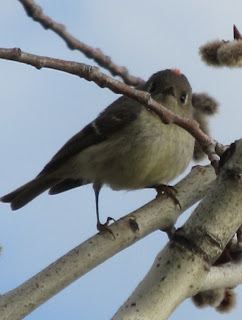I posted a slideshow depicting my little green roof project last week (click
here) and this is a follow up with some details about its construction and the plants I used.
Building this "green" or "living" roof was a really fun weekend project and one that I have been thinking about for a long time. My initial thoughts about green roofs came about from discussions with Kevin DePuy of
Adapt Design + Build. He and I have talked about putting a green roof on the entrance to the
Home ReSource building, and we each expressed our desire to try some new things; I wanted to try native plants, and Kevin was looking at it from a building perspective- about making some low-cost green roof solutions for a variety of roof pitches.
So after some thinking and reading books about green roofs this winter, I figured the best way to learn is to try it, literally, in my own backyard. What I learn here, I will hopefully incorporate into the green roof at Home ReSource, but really, I want to add a green roof to my garage (that will be Phase 2!).
Ironically, a few years ago, my friend Mike joked that my wife and I had already finished landscaping our yard, so what were we going to do next? Then he quipped are you going to add another level? Well, it turns out he was right!
Roof construction
The first step in this project was removing the metal roof (it went back to Home ReSource, where I will probably end up
buying it again!), and reinforcing the framing to bear the weight of the new roof.
I added reclaimed 2x5 purlins on top of the rafters, and sheathed the roof in exterior grade plywood.
Then I added a reclaimed metal drip edge,
and framed the rest of the roof with reclaimed, rough cut 2 x 6.
I then installed a self adhesive waterproof membrane- this is the most expensive part of the whole project, but luckily they have a bunch of this type of material at Home ReSource. After some looking around, I found a lot of options there. One was a rubber pond liner- this would work great, but I wanted to keep weight down, so I went with the membrane.
On top of the membrane, I laid down landscape fabric, and fully encased the gravel drainage layer.
I added about 2” of gravel to the roof, and the reason I fully enclosed it was so the roots did not penetrate it, and so the gravel wouoldn’t shift or fall out of the drainage in the roof.
In retrospect, this is a lot of weight. Although gravel is cheap, I’d look for another alternative for future green roofs. I know many manufacturers sell plastic drainage layers and that might be the best alternative. We’ll see.
Soil mix
On top of the landscape fabric I added a rooting media. There are a lot of differing options and opinions on soil mixes for green roofs, and this is one area I wanted to experiment with. Over the course of mixing it and applying it, I changed the ratio a few times. My initial plan was to use equal parts of compost, pumice, and perlite. The whole idea is to have a light weight soil mixture, that has a fair amount of volume for roots, but drains well, and does not contain too many organics. Although I considered using other materials like sphagnum peat, crushed Styrofoam and others, I eventually ruled them out. As this progressed, I eventually stopped using compost- I was afraid of too much nutrients for the plants and the compost I also feared might hold too much water (for weight), and I switched to composted bark mulch (soil pep) and perlite.

This is a really light and loose mix. I went with 3”, and I think this will work out well. In the end, it is probably ¼ perlite, 1/3 compost, ¼ composted mulch, and 1/6 pumice.
To hold everything in place while the plants got established, I covered the roof in burlap. This will breakdown over time, and to plant it, I just cut holes in it.
Plant selection
I really wanted to use native plants for a green roof, and that is how this whole thing got started. We’ll see how my selection goes, but my goal is to find a mixture that includes a diversity of plant species (read: not all sedum, like many green roofs), for human interest, wildlife (insects and the like) value and aesthesis, low rooting depth (that is, no taproots), fibrous roots that with help to bind the soil, plants that seed prolifically (to fill in the roof), a diversity of heights and textures, drought tolerant, plants that are easy to grow, species that are commercially available, and plants that are relatively low growing.
Here is what I settled on:
- Prairie June grass (Koeleria macrantha), bunchgrass, prolific seeder, deepest root depth of the group
- Idaho fescue (Festuca idahoensis), bunchgrass, prolific seeder, low rooting depth
- Yarrow (Achillea millefolium), forms a mat and spreads with rhizomes, tallest plant (when in flower)
- Rosy pussytoes (Anntenaria rosea) - forms a mat and spreads, their light foliage reflects sun
- Cutleaf daisy (Erigeron compositus) - these form a low mat and flower for a long time (starting in April)
- Lanceleaf stonecrop (Sedum lanceolatum). I used sedum because it is a requirement on any green roof. It is mandatory. And they enforce this. A nice succulent, though.
- Elkhorn clarkia (Clarkia pulchella) this is for color- they are annuals, with very shallow roots, but they readily reseed
Plants for this project I got from my own garden, from the UM Conservation Nursery at Fort Missoula and from Kathy at
Blackfoot Native Plants Nursery, and the Elkhorn clarkia I grew from seeds from
Native Ideals Seed Company.
I'll post updates about the successes (or failures) and we'll see how it goes.






















